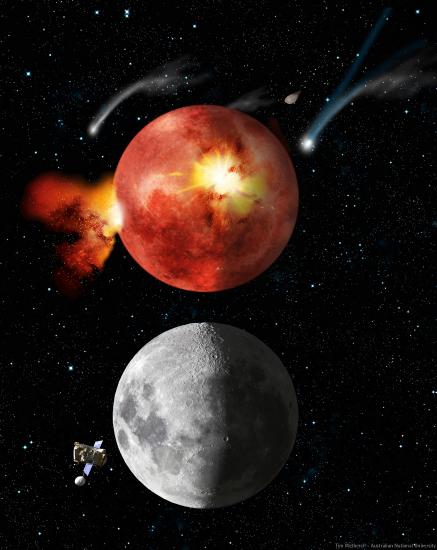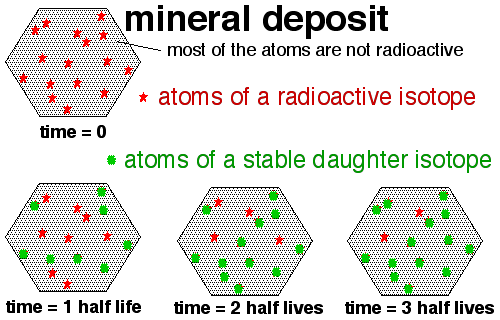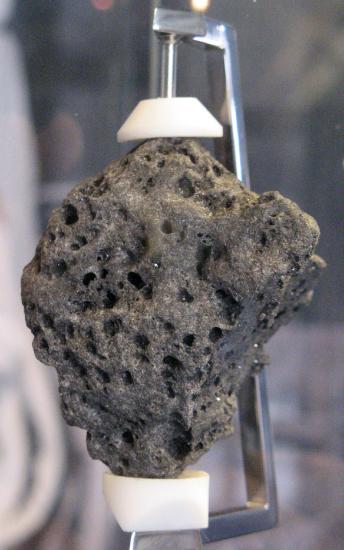6.4: Origin of the Solar System
( \newcommand{\kernel}{\mathrm{null}\,}\)
 A young star with a disk of gas and dust that may form into a planetary system one day.
A young star with a disk of gas and dust that may form into a planetary system one day.
https:/www.pikist.com/free-photo-svgri;
Where did it all come from? That is a question that philosophers and astronomers have pondered for thousands of years. While cannot rewind time and watch the formation of the Solar System form the beginning, we can look at the Solar System as it is today for clues as to its origins. From that, we can develop a model to describe how it may have gotten that way. Any model for the origin of the Solar System must be consistent with the laws of physics as first described by Isaac Newton and later expanded by Albert Einstein with his theory of general and special relativity.
A theory on the origin of the Solar System must also be able to account for what we can observe today. Some observations that we can make about the Solar System include the following:
Mass
The Sun contains over 99% of the Solar System’s mass while the planets contribute only about 0.2%
Angular Momentum
In contracts, planets have most of the Solar System’s angular momentum.
Patterns of Motion
All the planets orbit the Sun in the same direction and in roughly the same plane. All of them are inclined less than 10 degrees from the ecliptic with Mercury having the greatest inclination. In contrast, the dwarf planets like Pluto and Eris have much more tilted orbits, at 17 and 44 degrees to the ecliptic, respectively. Also, the Sun’s rotational equator lies very close the ecliptic. The planets all orbit the Sun in the same west-to-east direction, called prograde revolution and the Sun also rotates in the same prograde direction. Also, except for Venus and Uranus, the planets also rotate in the prograde direction. The planets also have small obliquity, the tilt between equatorial and orbital planes, with Uranus again being the exception. The planetary orbits are also nearly circular.
Two Types of Planets
As we noted, planets are either rocky terrestrial bodies or gaseous Jovian worlds. Their distribution varies roughly with their distance from the Sun with the dense-metal-rich terrestrial planets in the inner system and the giant, hydrogen-right planets in the outer system. The distances between the planets roughly conform to a simple rule, called Bode’s Rule, which states the planets have a geometry spacing between their orbits. Mercury, the inner-most planet, has the highest metal composition, followed by the three more rocky planets, Venus, Earth, and Mars. Then, asteroids occupy a strange gap in the planetary distribution. After the asteroids, come Jupiter and Saturn, two planets made mostly of hydrogen and helium. Next come Uranus and Neptune, similar to the other Jovian planets, but with more hydrogen compounds like methane and ammonia, giving them a blue or greenish blue hue. Beyond Neptune, we have the Kuiper belt full of small icy bodies and even more such bodies beyond until we head into interstellar space and the Oort cloud beyond.
The Jovian planets also have numerous moons, making them appear to be miniature versions of the Solar System while the terrestrial planets have relatively few moons.
Craters
Many bodies, especially those that have little or no erosion or plate tectonics, like Mercury and the Moon, show evidence of numerous impacts. These impacts have left craters behind and our dating of the craters of the Moon indicate that the majority of these impacts occurred within the first few hundred million years of the Solar System’s history.
Asteroids and Comets
Examination of meteorites show that they differ in geological properties from all known planetary and lunar rocks. As for comets, most of them orbit in a large, almost spherical swarm around the Solar System called the Oort cloud. Kuiper belt objects resemble comets in their composition.
The Exceptions
Finally, our model of the Solar System must also account for the anomalies that we observe, such as Earth’s large Moon, Venus’ retrograde motion, and Uranus’ extreme axial tilt.
Overall, the universe is mostly hydrogen and helium, however, the terrestrial planets, including the Earth, are mostly made of heavier elements. Where did those heavier elements come from? Massive stars can fuse hydrogen and helium in heavier elements such as oxygen, carbon, nitrogen, silicon, etc. However, even the most massive stars cannot fuse atoms inside their cores into elements heavier than iron. Those elements can only be formed in the supernova explosions that mark the death of the most massive stars. These elements where then hurled into space by the force of the supernovae. Eventually, they coalesced into nebulae (Latin for clouds) made up of hydrogen, helium, and dust particles.
6.5.1 Nebular Theory
According to nebular theory, one of these clouds began to contract. The cause of this contraction is unclear, but perhaps it was force of a dying star going supernova that pushed the cloud into contracting. Kant and Laplace first proposed the nebular collapse theory over two centuries ago and since then, astronomers have found a great deal of evidence to support it. For example, we can see young stars forming in massive nebulae like such as the Eagle Nebula. In addition, we can see that the star Beta Pictoris has a disc of warm matter surrounding it, which may indicate early planetary formation.
.jpg?revision=1) This image of the star Beta Pictoris shows evidence of a protoplanetary disk.
This image of the star Beta Pictoris shows evidence of a protoplanetary disk.
https:/commons.wikimedia.org/wiki/File:Protoplanetary_disk_of_RX_J1615_(eso1640b).jpg;
As the cloud collapses, it must speed up due to conservation of angular momentum (Chapter 3). Just as a skate can start herself rotating slowly with her arms fully extended and then speed herself up by bringing her arms into her body, a cloud will contract as it contracts further. Meanwhile, collisions between particles will cause cloud to flatten and form a disc around the early star. Collisions between gas particles will reduce random motions and up and down motions, resulting in flattening as the particles eventually settle into motions that orbit around the forming star. The material in the disc eventually forms into the planets. Initially, the early Sun rotated much faster than it does now, however, friction between its magnetic field and the nebula slowed it down.
Note that some astronomers had propose a rival theory to the nebular theory in which the planets formed from material torn off the surface of the Sun as it made a close encounter with another massive object. However, this encounter theory could not explain the motions of the planets and their distribution.
6.5.2 Formation of the Planets
The planets formed through condensation, which occurs when gas cools and forms tiny solid particles. These dust grains act as condensation nuclei. Temperature governs where particular materials condense out. Astronomers mark a boundary in the between where rocky particles condense and where icy particles condense the frost line or the snow line. Inside the snow line, where it is too hot for hydrogen compounds to form ices, the terrestrial planets form, with metals condense closer in, making Mercury the most metallic planet. Outside the frost line, the Jovian planets form from ice particles.
The small particles of rock and metal inside the snow line eventually start to clump together. Initially, friction between the particles creates electrostatic charges which cause the particles to stick together. Over time, some of these particles form larger bodies called planetesimals, which are large enough for gravity to take over the accretion process. Gravity also reshapes the bodies, forming them into spheres. Gravity pulls all matter toward an objects center of mass, so above a certain mass, all bodies take on a spherical shape. More smaller objects collect into a few large ones. As the planetesimal collided, their energy converted thermal energy, causing them melt. These hot molten bodies continue to gather the remaining mass in their orbital path, becoming the four terrestrial planets. As they become molten, the denser elements like iron and nickel sink into the center, forming the planetary cores.
 Artist conception of a planet forming from the collision of smaller planetesimals.
Artist conception of a planet forming from the collision of smaller planetesimals.
https:/www.pikist.com/free-photo-iykto;
Meanwhile, outside the snow line, ices form the basis of the particles that accrete into planetesimals. A combination of photos and the solar wind (charged particles flowing out from the Sun) blew the lighter gases into the outer Solar system. The gravity of these larger planets pulled the hydrogen and helium together. Meanwhile, these large gas giants formed discs of their own which condensed into the moons of the Jovian planets.
 Early in its history, the Earth was probably a ball of hot magma.
Early in its history, the Earth was probably a ball of hot magma.
https:/www.pikist.com/search?q=Magma;
Like the terrestrial planets, the Jovian planets also underwent differentiation, forming rocky cores surrounded by gases ices. Jupiter won the race to gobble up the most matter, leaving only a small amount of debris in the asteroid belt marking the boundary between the inner and outer solar system. Uranus and Neptune, being further out and colder, could gather more ices than Jupiter and Saturn, giving them higher methane, ammonia, and water contents.
Leftover debris then formed into the asteroids and comets. Asteroids being closer in than the Jovian planets, could form out of both dust and ice. Some of them formed large enough bodies to undergo differentiation. Larger asteroids like Ceres, are spherical with metallic cores surrounded by ice and rock layers. Comets and the Kuiper Belt objects like Pluto, formed mostly from ices and frozen nitrogen, which smaller amounts of rock compared to the asteroids.
The early few million years of the Solar System had a lot more planetesimals that are present today. Perturbations from Jupiter’s gravity disrupted them from their ordinary orbits and flung them into the inner solar system. Others were flung into the outer solar system, colliding with the moons of the Jovian planets or being gobbled up by the gas giants themselves. This Late Heavy Bombardment period lasted between 4.1 and 3. 8 billion years ago and turned much of the solar system into a shooting gallery. Massive collisions left many of the Moons and planets like Mercury heavily cratered. One major collision probably led to the formation of the Moon (Chapter 8). Icy planetesimals from beyond the snow line likely brought water to the Earth. Mars’ two moons, Phobos and Deimos, may be captured planetesimals leftover from the Late Heavy Bombardment. Other large collisions may have caused the odd rotation of planets like Venus and Uranus.
 The Moon was likely formed from a collision between the Earth and a Mars-sized body astronomers have named Theia.
The Moon was likely formed from a collision between the Earth and a Mars-sized body astronomers have named Theia.
https:/commons.wikimedia.org/wiki/File:Lunar_cataclysm.jpg;
6.4.3 Measuring the age of rocks
How do we know how old the Solar System is? It turns out, the rocks we find on Earth do not help us answer this question much. Because the Earth has the most active surface of the terrestrial planets, there are few places on Earth where the crust is very old. As the various tectonic plates (Chapter 8) move, old crust disappears into the mantle while new crust forms as magma forces it way to the surface. The movement of plates raise up mountains and then wind and water wear them down. As a result, the Earth likely has the youngest surface of the terrestrial planets.
 Radioactive dating of a mineral sample.
Radioactive dating of a mineral sample.
The main way we date rock is through radiometric dating. Some isotopes are radioactive and decay into more stable atoms over time. Radioactive decay is a random process and we can never predict when a single atom may decay. As result, the decay rate is governed by a statistical model based on an exponential decay curve. Radioactive isotopes decay according to their respective half-life, the amount of time it takes for half of the atoms present to decay. When a rock forms from the cooling of magma, the quantity of certain isotopes becomes fixed. By measuring the ratio of the radioactive isotopes to their decay product, we can calculate how many half-lives have passed since the rock formed.
The isotope most people may be familiar with is Carbon-14. However, its half-live is only about 5700 years, which is too short to be useful for dating ancient rocks. Carbon-14 dating is mostly used in archeology to date artifacts made of wood, bone or some other organic material.
Some dating methods that are useful for dating rocks include:
· rubidium-87 decays to strontium-87 with a half-life of 49 billion years.
· uranium-238 decays (in a series of steps) to lead-206 with a half-life of 4.5 billion years.
· potassium-40 decays to argon-40 with a half-life of 1.25 billion years.
Potassium-40 decays into argon-40 with a half-life of 1.25 billion years. This is a much more useful half-life for rock dating. The table below summarizes the potassium/argon ratio over a period of a few half-lives, giving the approximate age of a rock as the ratio is measured.
For example, say a rock contains potassium-40 when it forms. After one half-life (1.25 billion years), half of the potassium-40 will have decayed into argon-40, giving a potassium-40/argon-40 ratio of 1:1. After two half-lives (2.5 billion years), the ratio will become 1:3. After three half-lives (3.75 billion years), the ratio will become 1: 7. After four half-lives (5 billion years), the ratio will be down to 1:15.
|
Number of half-lives |
Potassium/Argon ratio |
Age |
|
1 |
1:1 |
1.25 billion years |
|
2 |
1:3 |
2.5 billion years |
|
3 |
1:7 |
3.75 billion years |
|
4 |
1:15 |
5 billion years |
Using radiometric dating techniques such as potassium-argon dating, scientists have determined that the oldest rocks ever found on the surface of the Earth have an age of about 4.28 billion years, meaning the Earth must be at least than old. But since the Earth’s surface has been under a constant reformation, we cannot be certain that the oldest rocks on the surface are the same age as the Earth itself or the Solar System. Fortunately, we have other rocks besides those found on Earth that we can date. One group has been falling onto the Earth since the earliest days of the Solar System. The other group, we can go and bring back. These are meteorites and the lunar rocks from the Apollo program.
Radiometric dating of lunar rocks has found that the oldest of them are about 4.4 billion years old. This gives us a minimum age for the Moon and given that the Moon likely formed from a collision with the Earth, the Earth must be even older. However, the Moon does not have active plate tectonics, so its surface must be older than the Earth’s surface. Most lunar craters date from between 4.1 and 3.8 billion years ago, giving us a time frame for the Late Heavy Bombardment. Finally, we have found that the oldest meteorites are 4.55 billion years old. Given that these meteorites formed out of the same disc debris that the planets formed from, the planets likely formed sometime around 4.5 billion years ago. Calculations then indicate that to give enough time for the Sun and the planetary disc to form, the nebula contraction probably began around 4.6 billion years ago.
 Lunar rock samples like this one from the Apollo 11 mission have enabled us to calculate the age of the Earth-Moon system through radiometric dating.
Lunar rock samples like this one from the Apollo 11 mission have enabled us to calculate the age of the Earth-Moon system through radiometric dating.
https:/commons.wikimedia.org/wiki/File:Apollo_11_moon_rock,_sample_10072,80.jpg;







